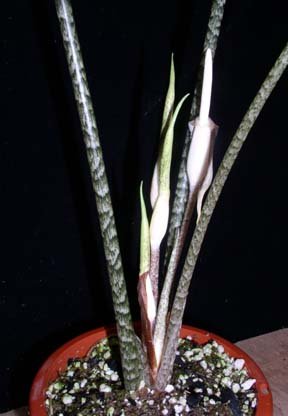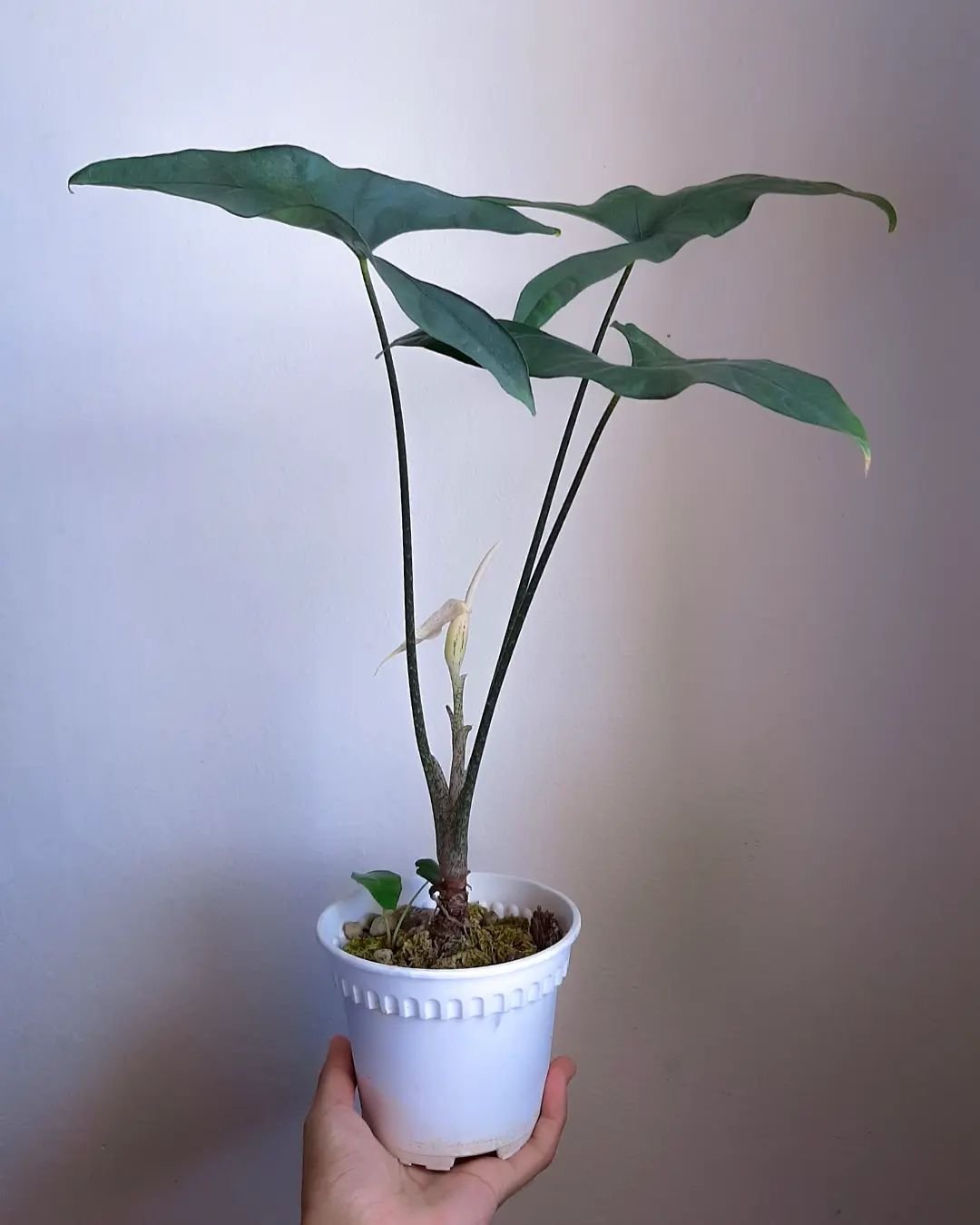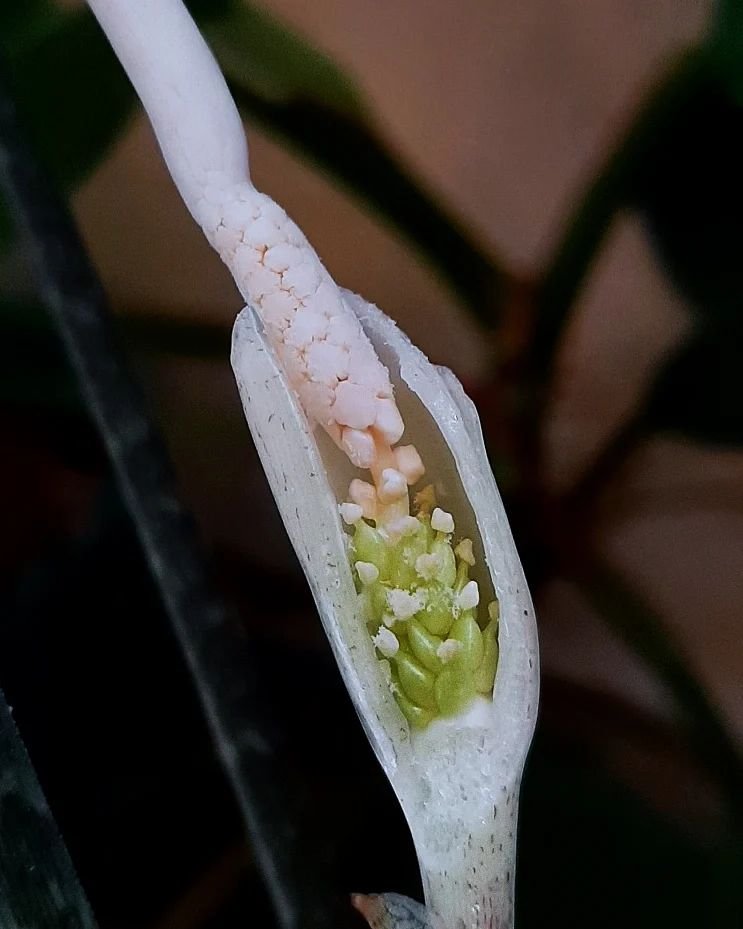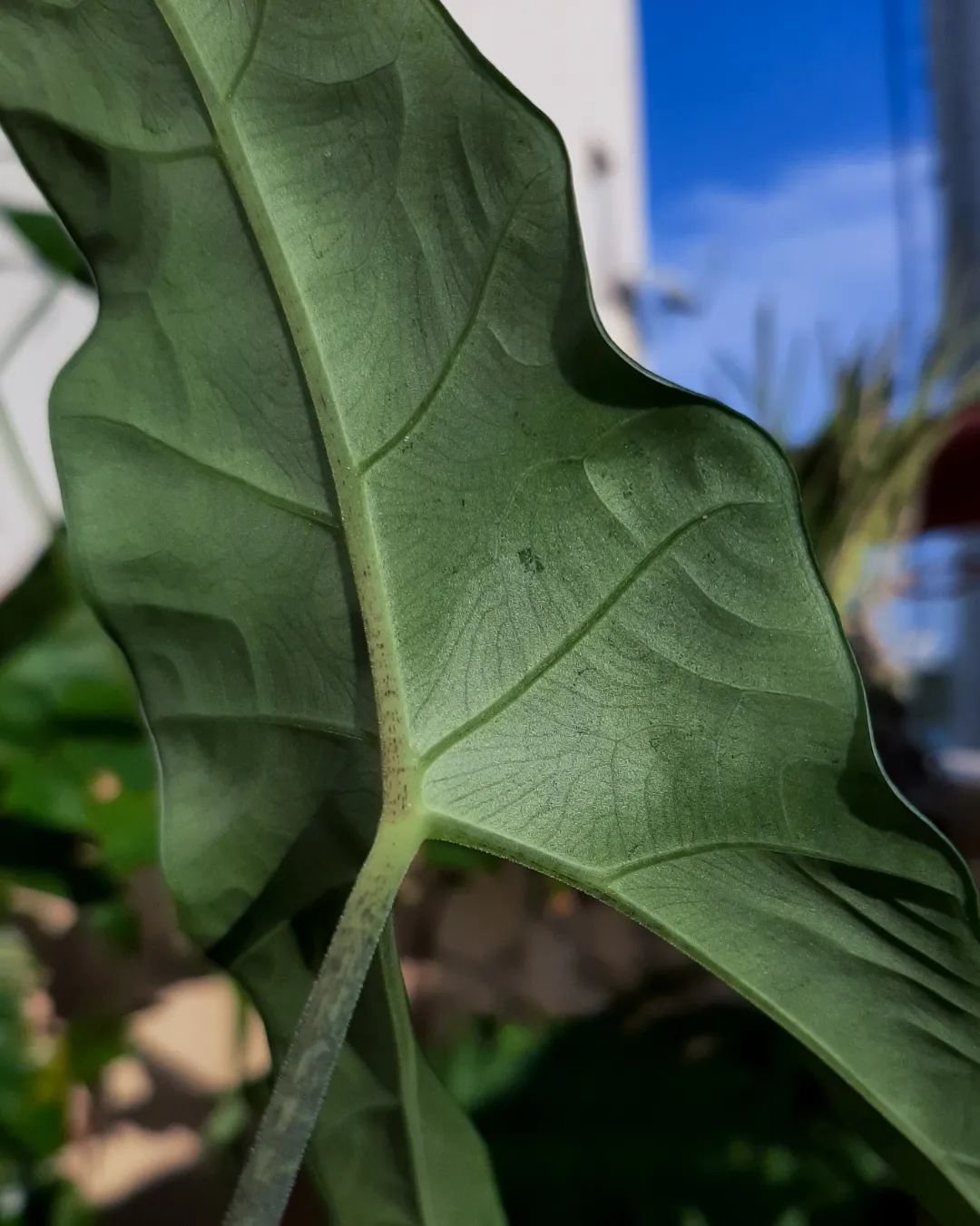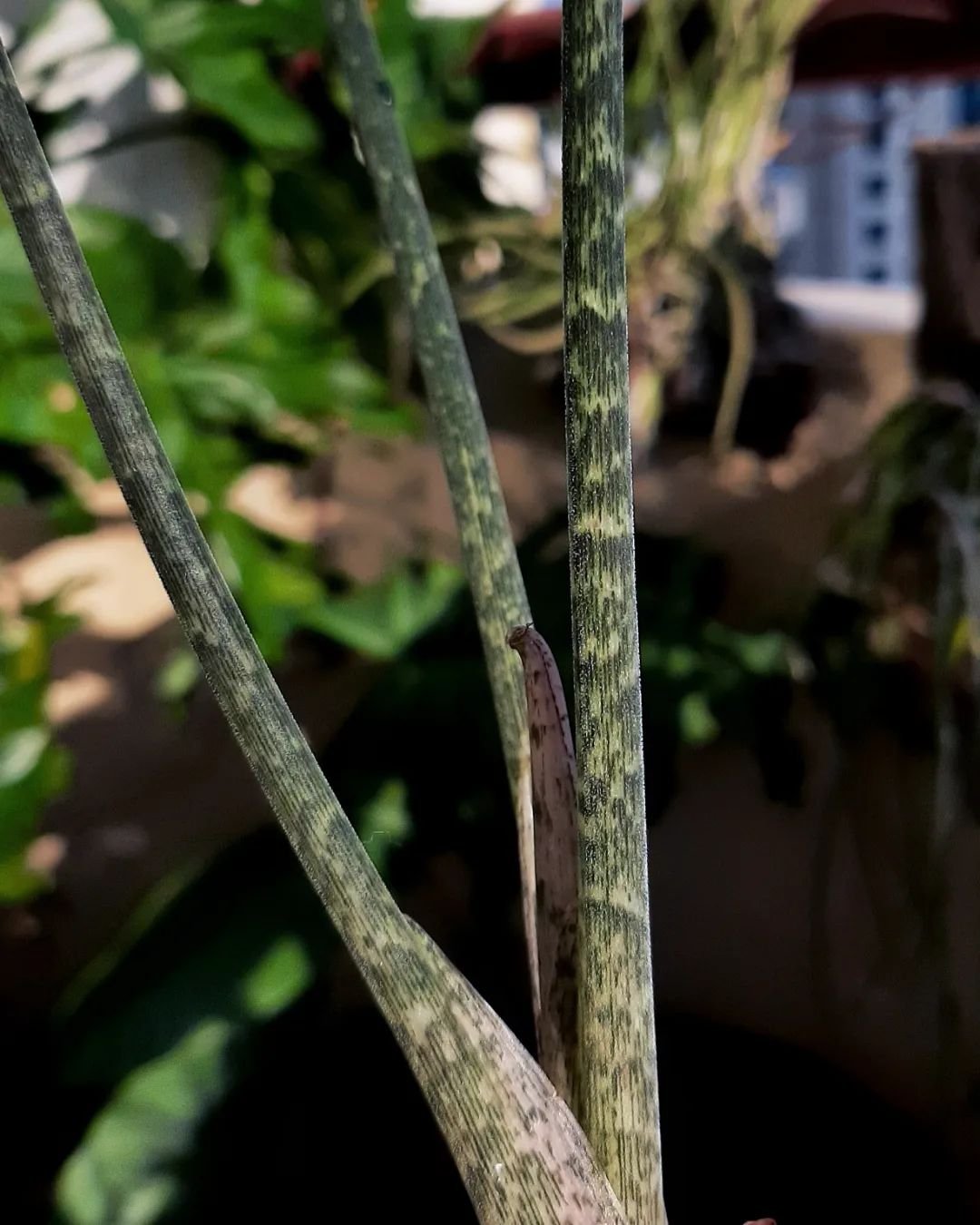ALOCASIA WONGII
ORIGINAL DESCRIPTION:
Ab Alocasia princeps inflorescentia tenuiore, spatha brunneo-rosacea, spathae lamina fusca, inflorescentia mascula minus exserta, petiolo Alocasia longiloba 'denudata' simulans sed tenuiore saepe aspero differt.
TYPUS:Cult. RBG Sydney Acc. No. 960457 ex Madai Caves, Hay et al 12180 (NSW, holo: iso, K, KEP, L, SAN - to be distributed).
SYNONYMS: N/A
DISTRIBUTION: Northeastern Sabah, Borneo
CLIMATE: Subtropical humid climate
Humidity is moderate throughout the year, ranging from 60% to 70%
Temperature is varies between the seasons - within the range of 48°F/9°C to 88°F/31°C during the day. Minimum temperatures never dip below 45°F/7°C
Rainy and humid season (October to May) and a dry season between June and October. The average annual rainfall is 1,200 mm
ECOLOGY: Terrestrial in lowland mixed dipterocarp forest on well-drained and occasionally inundated sites at low elevation
SPECIES DESCRIPTION:
Terrestrial herb ca. 60(-90) cm tall; rhizome ca. 2.5-4 cm diam.; petioles smooth or asperous, slender, erect, grey-green, tinged pinkish at the base, densely mottled in an oblique pattern of crowded longitudinally aligned fine dark brown lines, sheathing in the lower Vs-Vs; blade ca. 3/4 the length of the petiole, hastato-sagittate, narrowly triangular, dark (grey-)green above, paler below; anterior lobe widest at the base, the margin sometimes slightly undulate; anterior costa with 2-3 primary lateral veins on each side diverging at ca. 45-80(-90)°; axillary glands inconspicuous, sometimes conspicuous at the junctions of costae and petiole; secondary venation flush with the lamina to somewhat prominent abaxially and sometimes markedly divaricating, forming ill-defined interprimary collective veins towards the margin or these absent; posterior lobes rather slender, subequalling the anterior, the inner sides lanceolate to ovate; posterior costae diverging at ca. 100°, naked in the sinus for 2-4 cm
INFLORESCENCE:
Inflorescences to ca. 6 together; cataphylls membranous, mottled pinkish brown and green, marcescent; peduncle ca. 10 cm long, pale dirty pinkish; spathe ca. 7-8 cm long; lower spathe pear-shaped to ellipsoid, ca. 3 cm long, pale brownish pink, the mottling often forming vertical streaks; constriction usually oblique; limb narrowly (to broadly) lanceolate, distally tapering, brownish pink, distinctly darker than the lower spathe; spadix 5-7 cm long, very shortly stipitate for ca. 1 mm; female zone pale green; pistils somewhat distant - barely touching; ovaries subglobose; style slender, ca. 0.5 mm long, abruptly differentiated from the ovary; stigma 2-lobed; interstice ca. 5 mm, partly naked, slightly attenuate, 3-5 whorls of synandrodia, the lower ones lax: male zone ca. 1.2-1.5 cm long, ca. 4 mm diam., cylindric, somewhat constricted at level of spathe constriction, 3/4 to almost entirely within lower spathe chamber; synandria rhombo-hexagonal, ca. 2 mm diam., not overtopped by synconnective; appendix ca. 3 cm long, somewhat constricted at base, ca. 4 mm diam. near base, tapering to a blunt tip; fruiting spathe ovoid, to 4.5 cm long, off white to dusky pink with vertical darker streaks.
VARIEGATED FORMS: N/A
ETYMOLOGY: Alocasia wongii is named in honour of Dr Wong Khoon Meng, who has contributed much to knowledge of the botany of Sabah.
NOTES: A fairly well-defined and geographically coherent element distinguished from Alocasia princeps by the generally more slender stature, the petiole with markings distinctive in the complex but almost identical to those typically found in Alocasia longiloba 'denudata'.
The spathes are suffused a rather dirty purple-brown or violet-brown, with the limb somewhat darker than the lower spathe. The lower spathe in flower and the fruiting spathes are less rotund, and the limb shorter and more slender than in Alocasia princeps. The spadix is more slender with the pistils and synandrodia rather loosely arranged and the male zone is less exserted.
Populations in the vicinity of Sandakan have distinctively asperous petioles and the secondary venation is somewhat prominent abaxially and, towards the leaf margin, forms rather widely and loosely divaricating interprimary collective veins. Elsewhere in the range, e.g. at Madai, the petioles are smooth, the secondary venation is flush with the lamina and only faintly forms interprimary collective veins if at all.
CULTIVARS: N/A
HYBRIDS: N/A






